
Though the success and prolificacy of Montreal's MU and the MURAL Festival allows for the argument that La Metropole is the city with the strongest street art scene in Canada, if it isn't, it's Toronto.
Graffiti Alley is one of downtown's most popular tourist attractions. Well-decorated back streets like David French Lane, Milky Way, and the Ossington Laneway afford almost any walk on the city's interstitial arteries the possibility of a chance encounter with outdoor art.
Since 2012, StreetARToronto programs have beautified the city by supporting the creation of murals on surfaces tall and wide in neighbourhoods all over Toronto.
Municipal funding has also helped adorn the city's traffic signal boxes, bike lane dividers, and underpasses, allowing artists both local and itinerant to splash creativity onto topography otherwise dour.
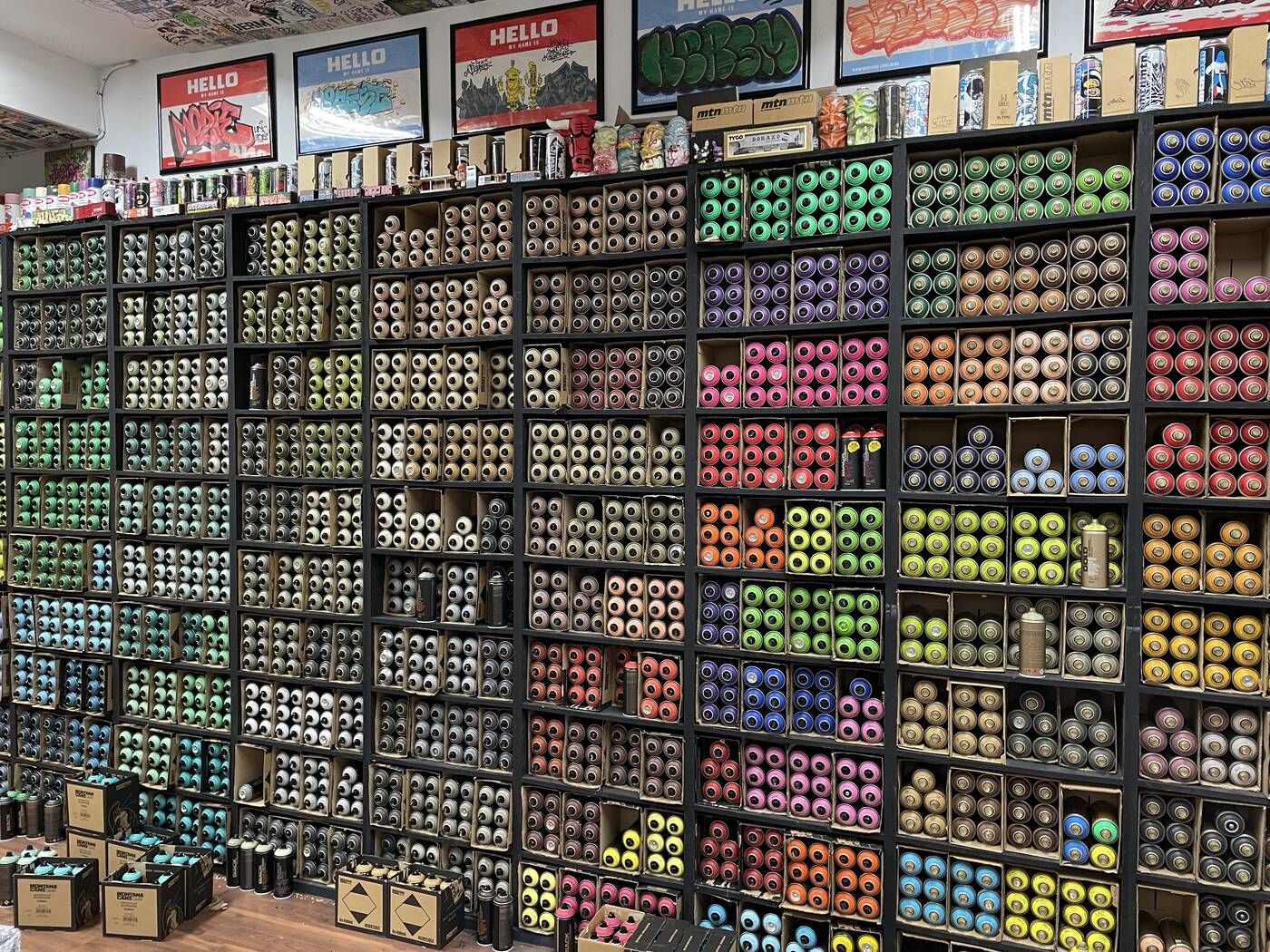
Spray cans on offer at Spadina Avenue's Collective.
While spray cans and other materials used in street art can be acquired at Michael's or bought from local art supply stores such as the venerable Curry's and Gwartzman's, few places in the city stock German MONTANA-CANS, acrylic spray paint cans valued by muralists for their even application, vibrant coloration, and durability.
Because of the expansive intersection between street art and popular culture, most shops that carry professional-grade spray paint also traffic in customizable vinyl art figurines like Dunny, Janky, and Bearbrick.
Wildstyle virtuoso Skam's Homebase on Camden offers both, but even their impressive selection of Montana paints and art figurines is dwarfed by the array on offer at Spadina Avenue's Collective.
I had the opportunity to speak with Heistdro and Ninjah, the proprietors of Collective, before the city's second stay-at-home order began on January 14th, 2021.

Heistdro inside Collective.
Of the duo, Heistdro is by far the more loquacious. In his youth, he was a break dancer affiliated with the Original Crew DDT and an international member of the Bronx's Ready to Rock. Leaning forward to talk, his staccato speaking cadence seems belies his rhythm on the dance floor.
"The original Collective is an idea and concept that me and Ninjah came up with, after taking over an existing store called The Bombshelter, which was underground, at the corner of Queen & Spadina. It was owned by a guy who went by Zion, still one of our great friends," he tells me.
Until Homebase opened in 2010, The Bombshelter was Toronto's only store catering specifically to the city's burgeoning community of street artists, serving as a hub.
Then-Mayor Rob Ford specifically called out graffiti as an urban blight; under Hizzoner's mandate, the municipality aggressively and indiscriminately pressure-washed and painted over tags, bombs, and murals citywide.
This led to street artists using the late mayor's likeness for dozens of subversive works, and eventually to the 2012 creation of StreetARToronto as an avenue for cooperation between the city and its artists.
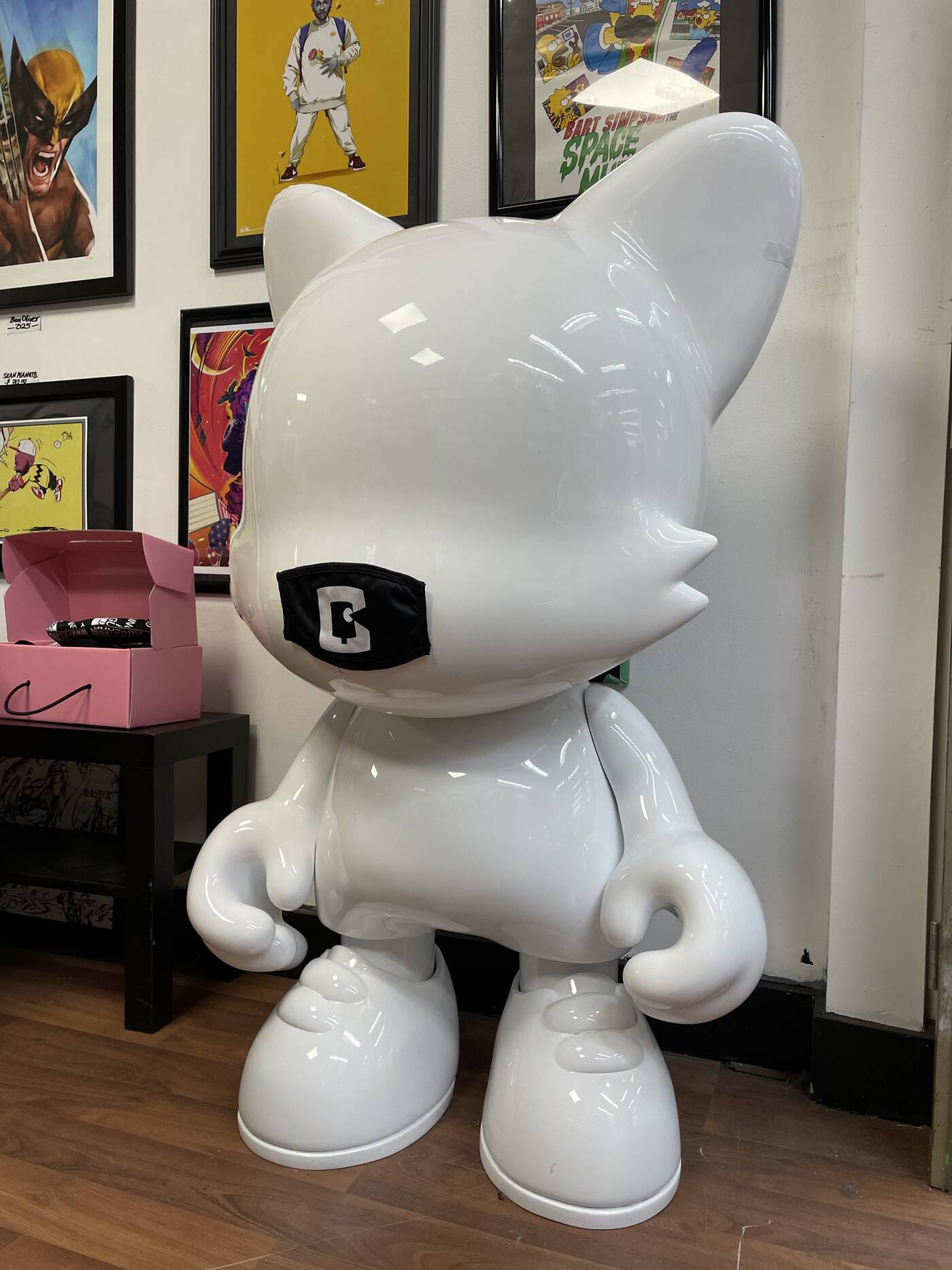
Collective deals with art "from beginning to end, inception to conception."
"At the time, Zion was just kind of exhausted with running the shop. He was looking for someone to take it over. So I did. Me and Ninjah had been friends from before that. I was always trying to get him to come in, because he had the full information. He knew all about art toys, street wear, pop culture, stuff like that. I knew about graffiti."
He adds: "Around 2011, 2012 we had a little meeting at - I think Gorilla Monsoon?"
Ninjah cuts in. Laconic compared to Heistdro, he's slouching comfortably in his seat. "It was The Horseshoe Tavern."
"Yeah, the Horseshoe," Heistdro says. "We got a piece of paper and made a list of everything we could do to turn the store around, starting with changing the name. We fused our minds together to create a great idea, and came up with the model for Collective. 2013 is when we officially opened - taking the paper off the window, had a new sign."
"We ran out of the underground at Queen & Spadina until 2016. We were a big shop in a little space, and needed to expand. We found this location, 389 Spadina, and here we are, five years later. Of course, there's a lot more in between."
Heistdro nods to Ninjah, who takes the cue to verbally tag in. Ninjah's speech is a modicum more measured than Heistdro's, but no less passionate about his work.
"Ideally, we deal with art from beginning to end, inception to conception. We supply artists, who then produce stuff like toys, canvases, clothing, prints, whatever. We specialize in brightening up a space, whether it be through materials we sell, or straight-up art that's produced by people working with the products we sell," he says.
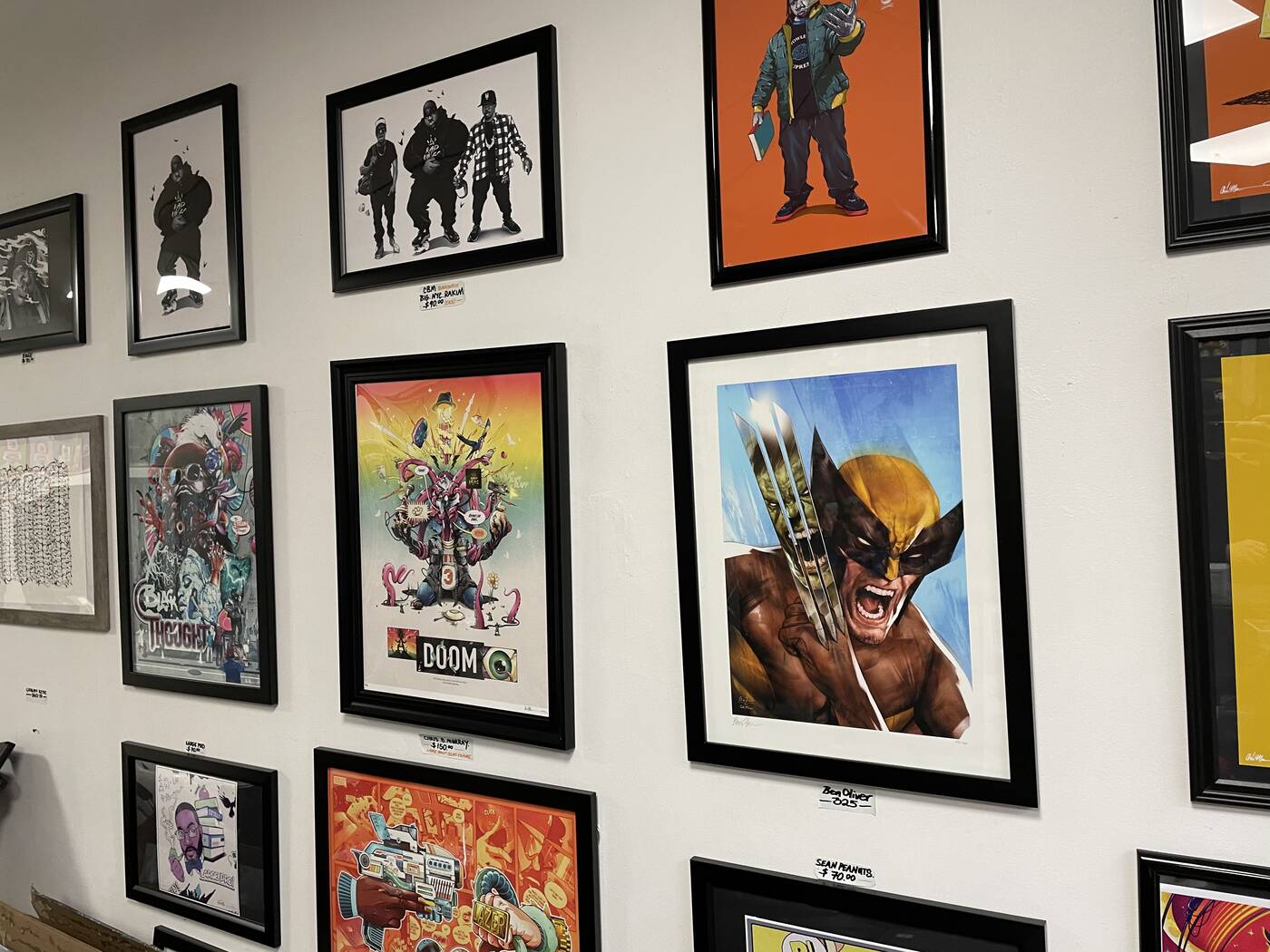
Collective is all about pop culture and nostalgia.
Heistdro speaks again, gesticulating towards the display of vintage trading card packs (complete with ancient rectangles of bubble gum) behind him.
"A lot of what we stock comes from pop culture and nostalgia for pop culture. We were already going to cons like Fan Expo to do stuff like meet Ric Flair or get a signature from the guy who played RoboCop. There's a lot of love for stuff old and new - people young and old come into the store to look at it."
"Look at the packaging - there's design and creativity in it. Whatever people do - street art, shoe painting, collecting, everything we carry goes together."
Ninjah interjects. "That’s kind of in a nutshell how we came up with the name Collective. It's derived from the act of collecting, but it also represents what we do and who we are."
The large space at 389 Spadina reflects this blended approach. Cleaved down the middle, it almost looks like two separate stores; urban art supplies on one side, toys and pop culture memorabilia on the other.
Says Ninjah: "It's not until you look up and see that there are visually striking things all over the store, on every wall and ceiling, that you see that it's not two halves but a whole. The place is like a museum."
Collective's maximalist curation makes entering the store an eye-catching experience. Almost an entire wall is occupied by spray cans, caps boldly proclaiming the colours they contain.
Handmade sculptures of deceased rappers MF DOOM and Ol' Dirty Bastard by BBoy Blackz are displayed prominently on the counter. The name of the store is printed hundreds of times on banners, stickers, and clothing, in the guise of seminal logos.
Prior to the pandemic, the store's curb appeal made for a steady stream of walk-in traffic.
Like most other independent brick and mortar retailers, Collective's business shifted online. Fortunately, they had spent the two years before COVID-19 establishing a strong web presence.
As Heistdro tells it, "We noticed that other stores around the world had killer online, and were using the success of their web stores to open flagship shops. We thought, 'well, we already got the shop.' We put a lot of dedication into building our website retail. We learned how to ship, and how to do customer service online."
"When the pandemic first happened, it was just me sitting here sending stuff out. I realized, 'I can't lay off my employees. I'm going to need these guys.' I figured we could be here from 9 in the morning to 8 at night, sending out orders, and we can still cover the rent and pay people."
"People always want to create, and that's what we're here to provide. Writers are always going to want to hit bridges, no matter what's going on. People want to bring joy to their rooms, and we try to help them do that. We have a solid customer base."

Handmade sculptures of deceased rappers MF DOOM and Ol' Dirty Bastard by BBoy Blackz.
Adds Ninjah, "Not just locally, either. We supply all over Canada, and get international orders all the time as well. Our ceiling has stickers from all over the world that people sent to us as gifts. Art and culture is global."
Heistdro nods. "One thing I really miss because of the pandemic are live events. We would do DJ and MC showcases in here. B-boy battles, flea markets, parties, releases. Live painting in the compound space in the back. We've had veteran artists like Bacon, Smoke One, and Durothethird come through and paint here."
Collective recently collaborated with the designer toy brand Superplastic to release Collective editions of legendary L.A.-based street artist Sket One's Canbot and Superkranky designs, in the "Toronto Red" colourway.
Says Heistdro of the collaboration, "Really, it's mostly word of mouth that people find out about us with. Social media helps, but it's collaborations like this one that get our name — and Toronto's — into places all over the world. The toys are part vinyl toy and part working spray can. It was like they designed a toy after our shop."
Both Heistdro and Ninjah are in their forties now, and fathers. Entering their eighth year of running Collective, they attribute the store's success to their strong partnership.
Animatedly, Ninjah elaborates: "This started from just the two of us. We've been doing this for nearly a decade. Both of us wore a lot of hats getting this place going. Our interests have bled into each other's a lot. Neither of us come first. Other than our families, Collective is foremost."
"Our kids like a lot of the same stuff we do. My son gets into whatever is popular, so right now it's Star Wars. We want this place to also be a place where parents can come in with their children and find something that they can appreciate together."

Collective wants to welcome both adults and children.
Of the city's evolving relationship with street artists, Heistdro offers: "The city knows now that they have to put a budget aside for art. They'd rather have legal art making the city prettier, because the more you try to squeeze artists, the more tags and etches take over."
"We support every artist unconditionally. Whether they're here to get something or not, brand new or a vet, they can always just come by and pull up a chair to rest. And when they get commissioned or inspired to bomb a wall or do a mural, we're here to get them the stuff they need to do it."
Of course, much of Collective's good fortune stems from its location. Ninjah grins as he recounts. "We were extremely lucky to get this space when we did. With rent destroying businesses on Yonge, it was undeniable that Spadina was going to become the next major artery.
"We're good friends with our neighbours. They take care of us. The crepe place next door takes care of us. Tasty's up the street. Creeps and Dark Squad XIII super close by.
"The guy who owns the t-shirt place across the street used to rent our storefront, and now he owns a bunch of buildings in Chinatown. He's one of our mentors. He's big in the Chinatown BIA.”
"It's great being where we are. I don't have to go further than a few feet to experience something different. I'm a sucker for something new. I love trying all of the independent, mom-and-pop situations, because that's where the sweetest nectar lies."
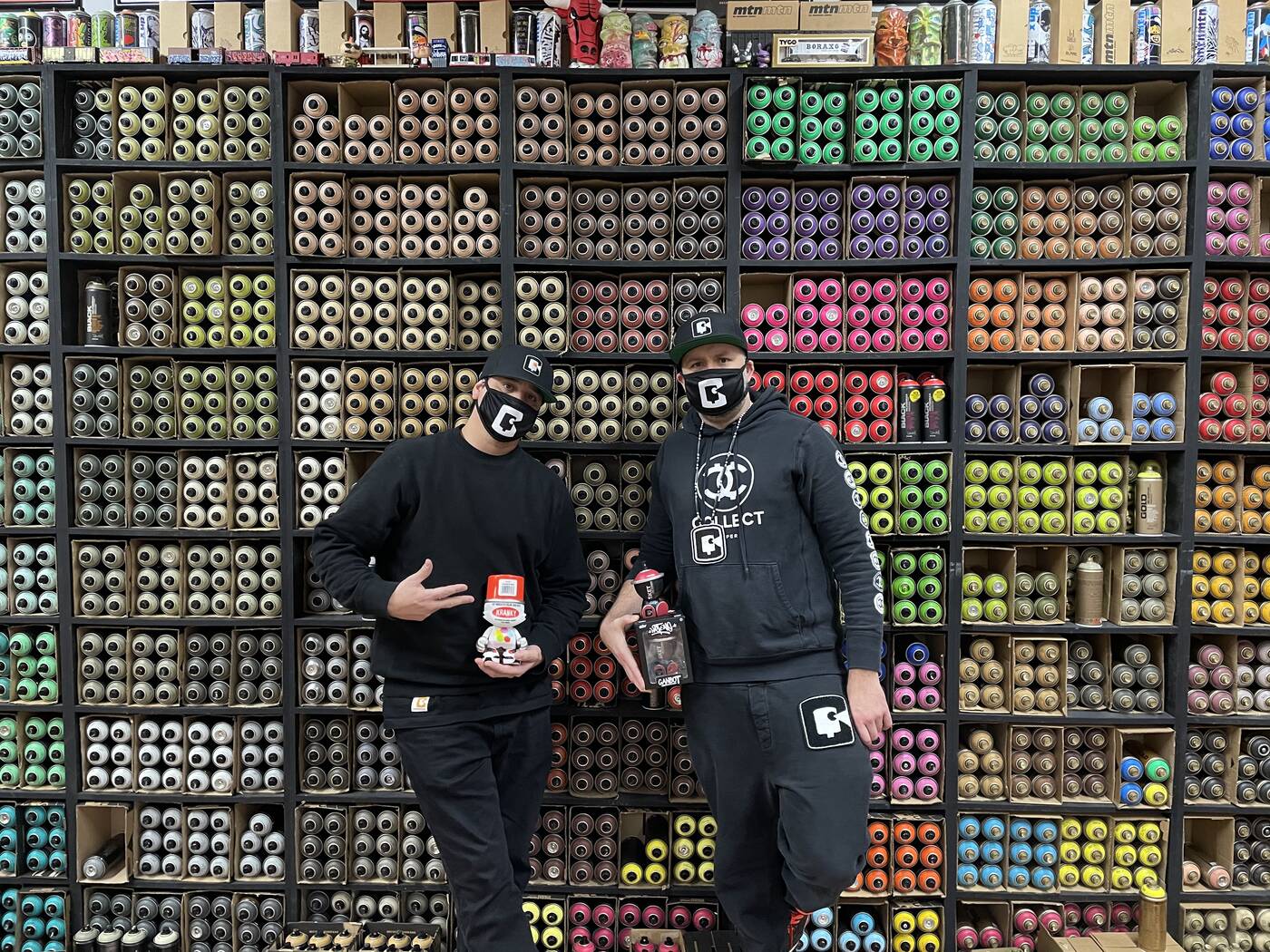
Heistdro (left) and Ninjah (right).
Though they are now raising their families outside of downtown, Heistdro off of Rogers near Eglinton and Ninjah in Mississauga, the pair remain unabashedly Torontonian.
Heistdro recounts: "I was born in Brampton. I came here maybe twenty-something years ago, and started out of nothing. But, what made me a true Torontonian is when I left the city to travel. Wherever I went, Japan, Asia, Europe, America, I was like, 'oh, this place is dope', but I always wanted to come back to Toronto."
"I like that I know everyone. I know the neighbourhood. I like the waterfront, and the sports teams. The people, the diversity, the multicultural everything.
"Me, being part Mohawk and part white, met a lot of people like me in the city, and I got to fit in. I like the comfort I have here. The food, the hip-hop, the culture. I like having seasons. It's a city that makes you think that things can change for the better."
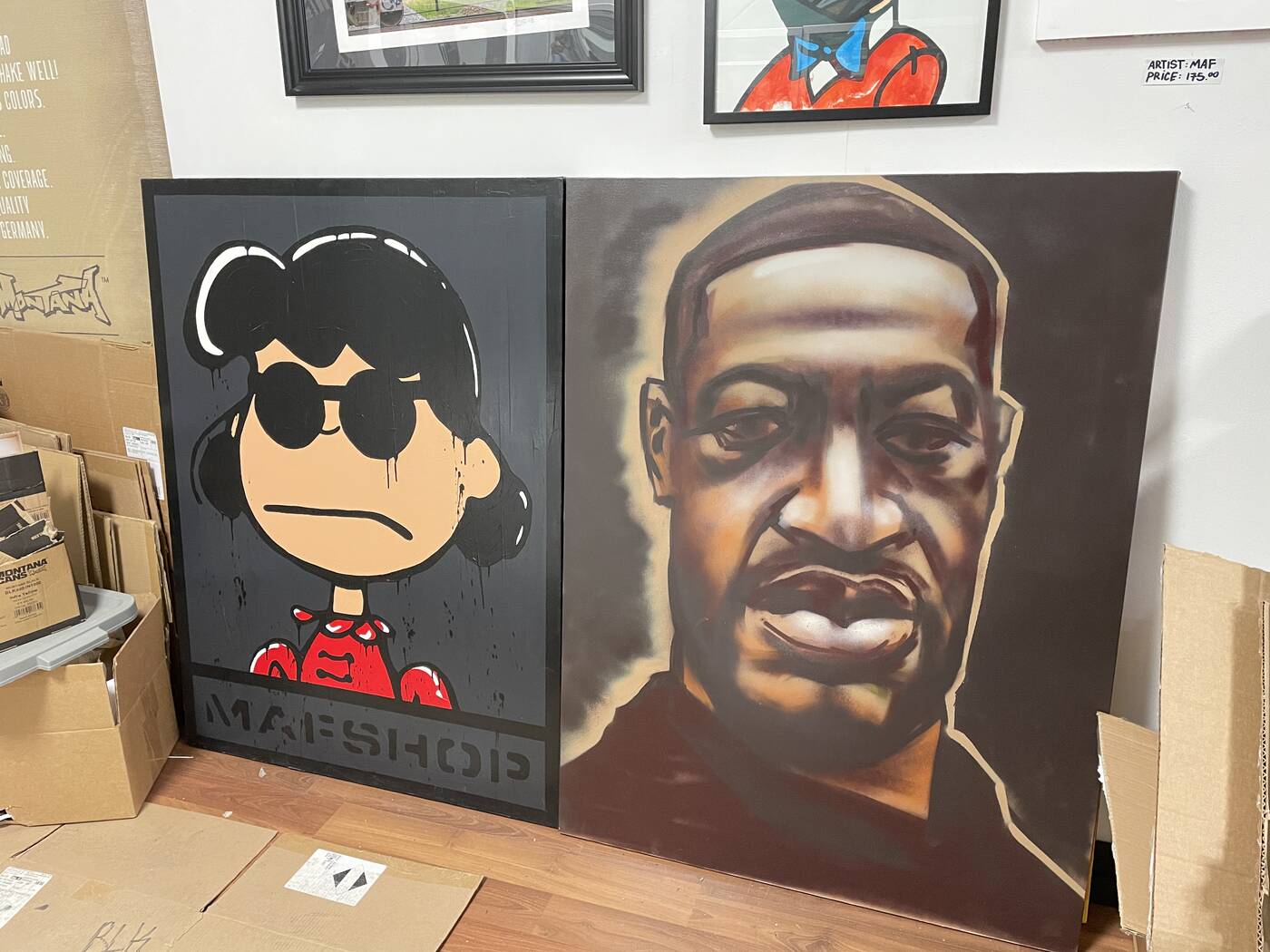
Heistdro praises the diversity of Toronto.
Ninjah offers: "This city's always changing. There's always something new to get into. Like, we just picked up pinball as a hobby, and lo and behold, Toronto is one of the best places to travel around and play huge pinball collections. No matter what it is you're into, you can find it here. I feel at home here because of the possibilities."
Heistdro gets the last word. "We're out here. We're not going to try to create things that aren't representing where we're from. Because, who are we without this city?"






0 comments:
Post a Comment